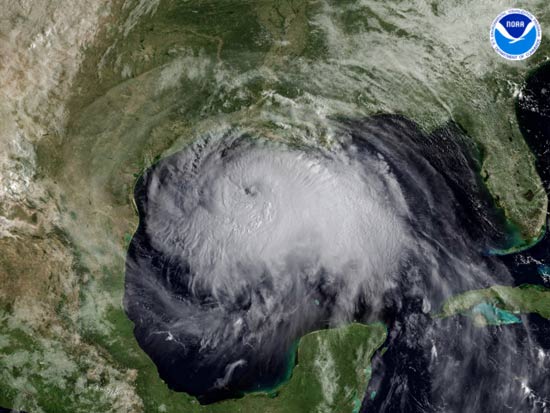Nation's First Weather Museum Survives Ike

The nation's first weather museum was one of the sturdy survivors of Hurricane Ike. Three meteorologists with the John C. Freeman Weather Museum, located on the first floor of a 75-year-old two-story home that also houses the Weather Research Center in Houston, safely rode out the hurricane there, while monitoring its activity. The center has 15 clients worldwide that rely on its forecasts, including one in the Bay of Bengal and others along the Texas coast, so members of the weather forecast team decided to stay at the office last Friday night as they monitored the situation. Normally, just one meteorologist would work the overnight shift, but it was unclear if anyone who went home would be able to get back to work after the storm hit. "It was pretty windy," said the center's Executive Director Jill Hasling. "We're about 50 miles inland from the Gulf, but we had some pretty strong gusts and pretty strong sustained winds for a while. They blew down a big, big pine tree in our front yard. It lay down across the street. There are lots of limbs that fell down in backyard, and we have plenty of stuff hitting our windows but they didn't break them." Locally, winds gusted at speeds up to 90 mph, knocking out power and windows in many area homes and businesses, Hasling said, but the building housing the museum was relatively unscathed. Power in the building was out from 4 a.m. Saturday through Monday night. Many traffic lights still are out in the city, Hasling said. It probably helped that the building's studs are steel, not wood, but its storm-worthiness also can be credited to one of its founding sponsors, Simonton Windows, which donated more than five dozen impact-resistant vinyl windows to replace the older existing windows in the facility, located in the historic Houston Museum District, Hasling said. Without the renovation, the storm would have blown in the building's windows, she told LiveScience, adding: "As we were watching the storm, you could feel the pressure on them. Right now, our back door is damaged. We cannot shut it very well. The pressure did in that door. We had two places without Simonton windows and they leaked."
One upstairs kitchen window, which was not replaced during renovations, had water pouring in and the wind howled through the glass, Hasling said.
"Our worst fear would be a tornado, because sometimes they accompany a hurricane," she said, but fortunately that did not come to pass.
The museum and research center apparently fared a bit better in Ike, in some respects, than the National Hurricane Center in Miami did during Hurricane Andrew in 1992, a category-5 storm. The NHC, located at that time in the Coral Gables neighborhood on the sixth floor of a 10-story building, lost its radar dish to Andrew's winds and debris crashed into a parking lot, said NHC spokesman Dennis Feltgen. The power went out, but the NHC has back-up generators, unlike the Weather Research Center.
Founded in 1987, the non-profit Weather Research Center manages a worldwide forecasting operation and provides research to scientists around the globe. Meteorologists work on severe weather advisories, marine forecasts, long-range outlooks, environmental studies and forensic meteorology services. A project of the research center, the Weather Museum educates the public about the weather, its history and public safety. It opened in 2006.
The museum is named for Hasling's father, who was a meteorologist. He died in 2004, knowing that the museum was in the works. He was very interested in education, she said, and had started the meteorology departments at Texas A&M and the University of St. Thomas.
"We figure if we can get weather safety information to them, people can become weather-wise and that will save their lives," she said.
Get the world’s most fascinating discoveries delivered straight to your inbox.
The 12-room museum has drawn visitors from 20 different countries and nearly all the U.S. states, Hasling said.
"It's interesting because everybody has a story about the weather," Hasling said. "Everybody has the weather in common."
- How Weather Changed History
- Why People Ignore Hurricane Evacuation Warnings
- Images: The Fury of Hurricane Ike
Robin Lloyd was a senior editor at Space.com and Live Science from 2007 to 2009. She holds a B.A. degree in sociology from Smith College and a Ph.D. and M.A. degree in sociology from the University of California at Santa Barbara. She is currently a freelance science writer based in New York City and a contributing editor at Scientific American, as well as an adjunct professor at New York University's Science, Health and Environmental Reporting Program.



